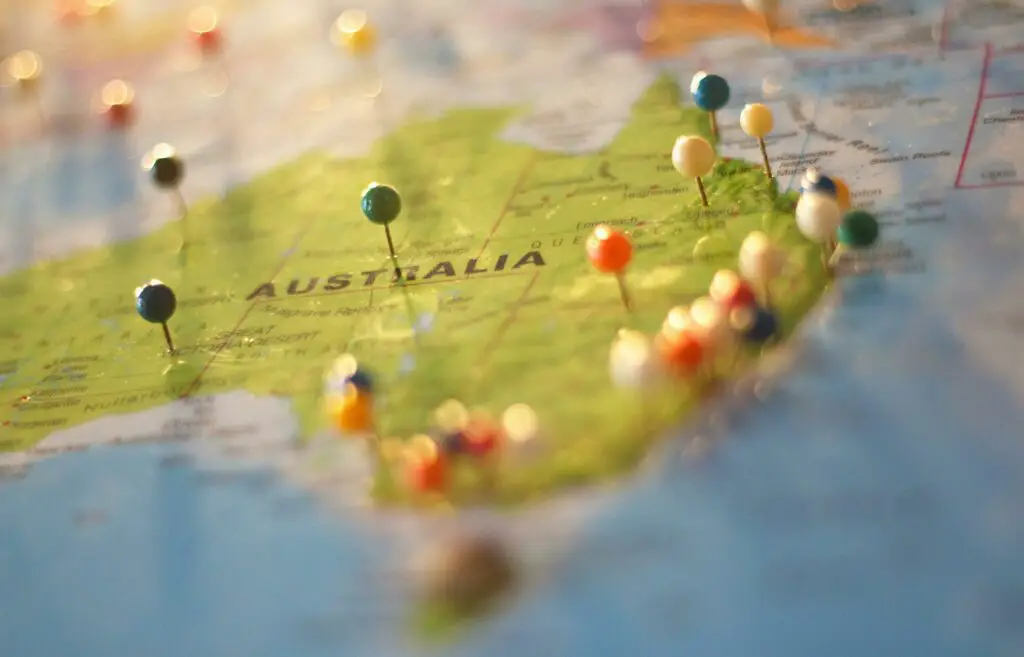Contents
Melbourne vs Sydney Population
When discussing Australia’s two most iconic cities, Melbourne and Sydney, one cannot ignore the underlying tale of population dynamics that shapes their identities and trajectories.
Historical Background
Melbourne, founded in 1835 by John Batman and John Pascoe Fawkner, and Sydney, established in 1788 as a penal colony, boast rich histories intertwined with Australia’s colonial past. Sydney, with its stunning harbor and strategic location, initially held the mantle of population supremacy. However, Melbourne’s rise to prominence began during the Victorian gold rush of the 1850s. The discovery of gold transformed Melbourne into a bustling metropolis, attracting fortune seekers from around the globe and setting the stage for a perennial population rivalry.
Current Population Trends
Fast forward to the present day, and the rivalry persists. Melbourne, known for its vibrant arts scene, world-class dining, and thriving multiculturalism, is experiencing an unprecedented surge in population. With over 5 million inhabitants, it vies closely with Sydney, which boasts a similar population size. However, Sydney maintains a slight edge, clinging to its status as Australia’s most populous city.
Sydney’s population growth is fueled by its status as the financial capital of Australia, drawing in professionals from various industries seeking career advancement and opportunities. In contrast, Melbourne’s allure lies in its diverse economy, spanning sectors such as technology, healthcare, and education, which attract migrants from far and wide.
Factors Influencing Population Growth
Several factors contribute to this population surge. Economic opportunities play a pivotal role. Melbourne’s burgeoning tech scene, exemplified by the emergence of tech hubs like Silicon Docklands, attracts skilled workers seeking innovative career prospects. Similarly, Sydney’s status as a global financial hub, anchored by its central business district, serves as a magnet for finance professionals and corporate executives.
Housing affordability also influences population dynamics. Melbourne, with its relatively affordable housing options, appeals to young professionals and families looking to lay down roots. The emergence of affordable housing initiatives and urban renewal projects, such as the Melbourne Housing Strategy, further bolster Melbourne’s attractiveness to potential residents. Conversely, Sydney grapples with soaring real estate prices, driven by high demand and limited supply. The Sydney housing market, characterized by fierce competition and exorbitant prices, poses a significant barrier to entry for many, impacting population growth.
Urban Development
The battle for population supremacy extends beyond mere numbers. Urban development strategies shape the fabric of these cities, influencing population distribution patterns. Melbourne’s emphasis on densification and urban renewal fosters a vibrant inner-city culture, characterized by bustling laneways, cultural precincts, and eclectic neighborhoods. The revitalization of areas like Fitzroy and Collingwood has transformed them into vibrant hubs of creativity and innovation, attracting young professionals and artists alike.
In contrast, Sydney’s urban landscape is defined by its sprawling suburbs and iconic landmarks. While the central business district remains the heart of Sydney’s economic activity, the city’s growth is increasingly spilling into its surrounding suburbs. Urban renewal projects, such as the Barangaroo precinct, are reshaping Sydney’s waterfront, creating new opportunities for commercial and residential development.
Employment Opportunities
Employment opportunities serve as a magnet for population influx. Melbourne’s diverse economy, spanning sectors such as healthcare, education, hospitality, and creative industries, provides a plethora of job opportunities for residents. The emergence of tech startups and innovation hubs, coupled with Melbourne’s reputation as the “cultural capital” of Australia, attracts skilled workers and entrepreneurs from around the globe.
On the other hand, Sydney’s finance and professional services sectors remain lucrative draws for migrants seeking career advancement and financial stability. The central business district, home to multinational corporations and financial institutions, offers a plethora of employment opportunities in areas such as banking, finance, consulting, and law. Additionally, Sydney’s thriving tourism industry, fueled by its iconic landmarks and natural beauty, creates jobs in hospitality, tourism, and related sectors.
Housing Market
The housing market, a perennial topic of discussion, underscores the divergent paths of these cities. Melbourne, with its more affordable housing options, attracts young professionals and families looking to enter the property market. Suburbs like Brunswick, Northcote, and Footscray have become popular among first-home buyers, offering a blend of affordability, convenience, and lifestyle amenities.
In contrast, Sydney’s housing market is characterized by high demand and limited supply, resulting in sky-high property prices and fierce competition among buyers. Suburbs like Bondi Beach, Manly, and Mosman command premium prices, making homeownership a distant dream for many. The phenomenon of “housing stress,” where households spend a significant portion of their income on housing costs, is particularly acute in Sydney, impacting population growth and demographic trends.
Lifestyle and Culture
Beyond economic opportunities and housing, lifestyle and culture play a pivotal role in attracting and retaining residents. Melbourne’s vibrant arts scene, exemplified by institutions like the National Gallery of Victoria and the Melbourne Museum, cultivates a sense of creativity and innovation. The city’s laneway culture, characterized by hidden bars, street art, and indie boutiques, offers endless opportunities for exploration and discovery.
In contrast, Sydney’s lifestyle revolves around its stunning natural beauty and outdoor attractions. Iconic landmarks like the Sydney Opera House and Sydney Harbour Bridge are synonymous with the city’s identity, drawing millions of visitors each year. Bondi Beach, with its golden sands and world-class surf, epitomizes Sydney’s coastal lifestyle, offering residents a respite from the hustle and bustle of city life.
Education and Healthcare
Access to quality education and healthcare services underpins a city’s livability. Melbourne’s renowned universities, including the University of Melbourne and Monash University, attract students from around the world, contributing to the city’s vibrant multiculturalism. Similarly, Melbourne’s world-class healthcare system, exemplified by institutions like the Royal Melbourne Hospital and the Alfred Hospital, ensures residents have access to high-quality medical care.
Sydney boasts a similar array of educational and healthcare institutions, albeit with a slightly different flavor. The University of Sydney and the University of New South Wales are renowned for their academic excellence and research contributions. Additionally, Sydney’s healthcare system, anchored by hospitals like Royal Prince Alfred Hospital and St. Vincent’s Hospital, provides comprehensive medical services to residents across the city.
Environmental Factors
Climate and environmental sustainability also factor into population dynamics. Melbourne’s temperate climate, characterized by mild summers and cool winters, creates an ideal environment for outdoor activities and urban living. The city’s commitment to sustainability initiatives, such as the Melbourne Renewable Energy Project and the Melbourne Urban Forest Strategy, underscores its dedication to environmental stewardship.
In contrast, Sydney’s climate is defined by its sun-drenched shores and warm temperatures year-round. While the city’s coastal lifestyle and outdoor amenities are a draw for residents and tourists alike, concerns about climate change and environmental degradation loom large. Sydney’s vulnerability to extreme weather events, such as bushfires and heatwaves, highlights the urgent need for climate action and resilience planning.
Conclusion
In the perennial rivalry between Melbourne and Sydney, population serves as a barometer of a city’s vibrancy and allure. While both cities boast thriving populations, each has its unique flavor and appeal. Melbourne’s cosmopolitan charm and affordability vie with Sydney’s iconic landmarks and coastal lifestyle. Ultimately, the choice between these two iconic Australian cities boils down to personal preferences and priorities, shaping the dynamic tapestry of urban Australia.
So, whether you’re drawn to Melbourne’s laneway culture or Sydney’s sun-kissed shores, one thing is certain: the battle for population supremacy will continue to define the narrative of these iconic Australian cities. As they evolve and grow, Melbourne and Sydney will continue to shape the future of urban living in Australia and beyond.





